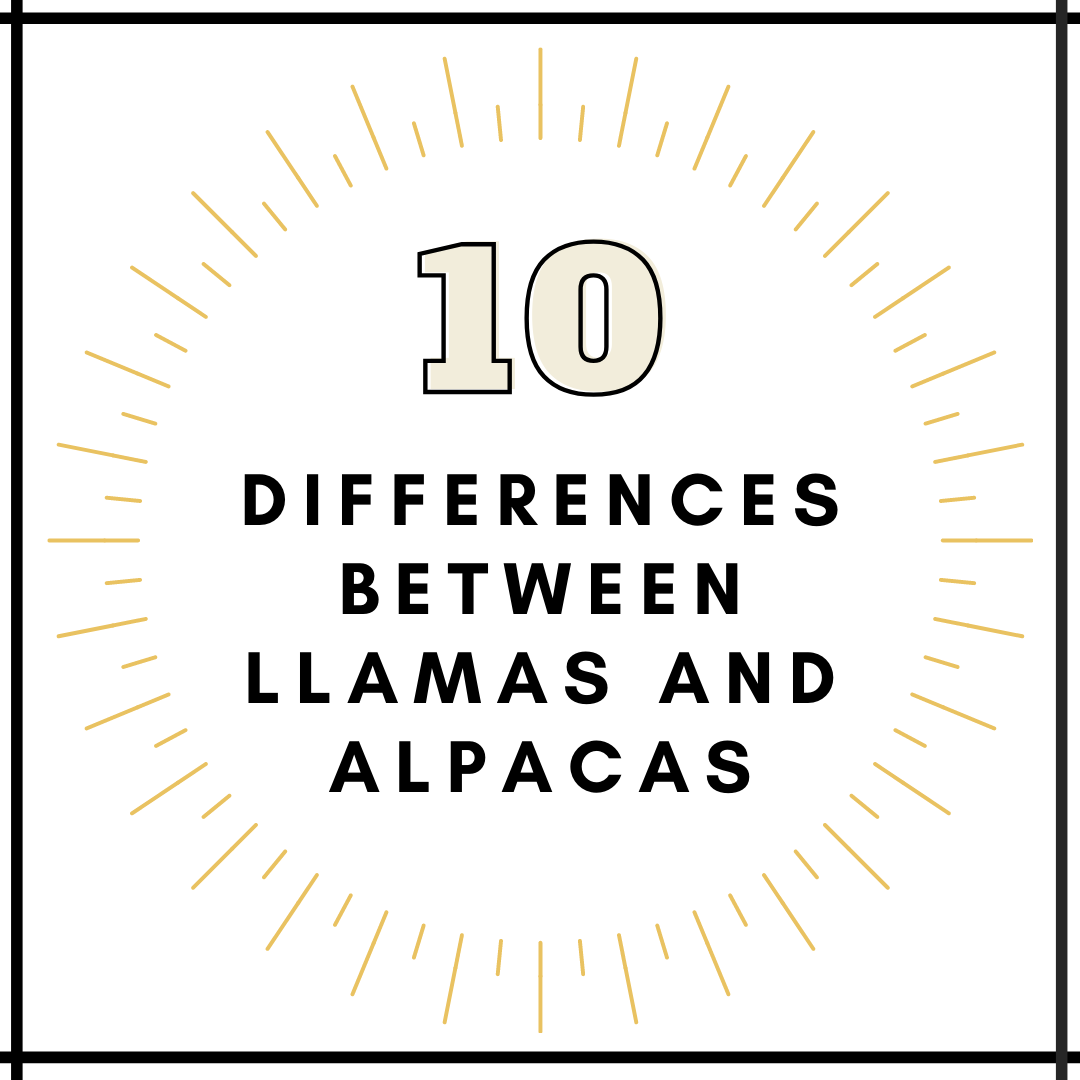By: Brianna Boecker

Llamas and alpacas are both quite similar and it can be easy to mix the two furry creatures up. But they are two different species of animals and have many qualities that make them unique from one another. Llamas and alpacas are both fluffy and adorable, but if you’ve ever wondered how to tell them apart, then the 10 facts below will hopefully help.
#1: Fiber
Alpacas have a soft, fine coat of hair, while a llama’s hair tends to be more coarse. Llamas have two coats, a soft undercoat and a coarse overcoat that’s difficult to separate from one another, while an alpaca has one coat of soft hair. An alpaca also produces thicker, more dense fiber that grows faster than a llama’s hair.

#2: Uses
Llama fiber is typically used for things like rugs, ropes, and cushion fillings because of its course texture. Alpaca fiber is typically used in clothing because its qualities are soft, warm, lightweight, and hypo-allergenic.

#3: Personality
Llamas are more independent while alpacas are more herd-like creatures. Sometimes llamas are used as guard animals for alpacas who tend to have a more nervous disposition. A llama is also much more likely to exhibit spitting behaviors.

#4: Color
An alpaca’s coat tends to be one uniform color, while a llama’s color is more likely to change across the coat. An alpaca’s hair also comes in a wider variety of colors (around 22 different shades).

#5: Face
A llama has a longer face whereas an alpaca’s face is shorter and more “smooshed” looking. Alpacas also grow more hair on their faces than a llama.

#6: Ears
Alpacas have shorter, more pointy looking ears and llamas have longer more curvy, banana-shaped ears.

#7: Size
Llamas tend to grow taller and larger than the average alpaca. Llamas range from 200 to 350 lbs. (90 to 158 kg) and stand about 42 to 46 in. (over 110 cm). Alpacas typically weigh in at 100 to 175 lbs. (45 to 68 kg.) and stand 34 to 36 in. (no more than 90 cm.) tall.

#8: History
Both species have been bred for more than 5000 years and are a part of the camel family, Camelidae. However, the alpaca was bred for its soft fiber and the llama was used primarily for meat or as a pack animal because it can carry one quarter of its own weight. The Inca culture used llamas to transport goods around their Ancient Empire.

#9: Location
Both animals are primarily found in Peru and Bolivia. The majority of llamas live high in the Andes Mountains of Bolivia, while the majority of alpacas can be found in central and southern Peru as that is where they originated.

#10: Ancestors
It’s thought that the Incas bred llamas and alpacas from the undomesticated Guanaco and Vicuña species. The Vicuña is a small, deer-like creature that is more closely related to the alpaca and the Guanaco is a smaller version of a llama. Both the Vicuña and the Guanaco are currently protected species in South America due to their low populations (the Vicuña more than the Guanaco because of their valued coat of hair).

For more information about the differences between llamas and alpacas, check out these webpages:


6 comments
Great information about the Alpaca, enjoyed learning about them very much! Thanks so much for your posted information.